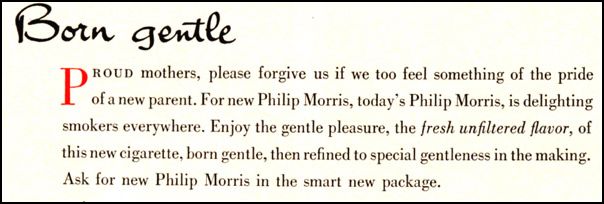
Neha M. sent us this fun little video that looks at women in beer commercials. Enjoy!
The Equal Justice Initiative just released a report about racial bias in jury selection, particularly in the South. I first heard about it on NPR. Racial discrimination in jury selection is illegal, but evidence suggests it’s still quite common, particularly through the use of peremptory challenges (the ability of attorneys to exclude a certain number of potential jurors without having to say why or justify it).
The results are striking; for instance, “…in Houston County, Alabama, 80% of African Americans qualified for jury service have been struck by prosecutors in death penalty cases” (p. 4 of the report).
Here’s a short video about one case:
The report doesn’t have as many informational images as I’d like, but here’s one showing the race of District Attorneys in several Southern states:
This video gives a historical overview, though it’s maybe not the most captivating description you’ll ever encounter:
And with that, dear readers, I’m off to court, as I got a jury summons and now must find out if I’ll end up on an actual jury. I’m taking lots of reading material.

Today we’ve got two examples of the sexual objectification of Black men.
Margaret M. sent us this commercial she recently saw on TV in Budapest. It’s for an ice cream bar called Maxi King, and I think it’s not stretching to say that the ice cream bar is a stand-in for the guy’s penis:
The placement of the container she takes it out of, her sexy look, the shot of the ice cream with the white center and the caramel goo…yeah, that’s a penis. And the commercial is playing on the stereotype that Black men are particularly well-endowed. Massive satisfaction!
In both cases, Black men’s sexuality is fetishized for White audiences. They represent a fantasy of exotic, hypersexual, and sexually-gifted Black men. While the stereotype could appear positive — after all, they’re presented as desirable sexual partners — the flip side is that Black men are thus also often presented as more animalistic and sexually aggressive than White men, a stereotype that has been used against them time and time again.
And as we see in the second commercial, representing a fantasy means you are interesting because of that fantasy, not because of who you are. When the man failed to live up to the woman’s fantasy, not only did she no longer find him attractive, she and her friend found the situation laughable…because you certainly wouldn’t want to sleep with, or even date, a Black man from Shropshire. If he’s not an exotic sexual fantasy, what’s the point?
UPDATE: Reader Carlo says,
I took the joke in the second commercial to be on the woman. She allowed her race based assessment of the man as an exotic other to make a fool of her when the man proved to be just like her (from somewhere local). Even though this commercial is obviously playing on recognized stereotypes (women find exotic men attractive), it sort of points out the ridiculousness of those assumptions. In the end, her friend is laughing at her for being, essentially, that daft white audience that equates blackness with the exotic.
For another take on fetishizing Black men, see our post on male sex workers in the Caribbean.
Gwen Sharp is an associate professor of sociology at Nevada State College. You can follow her on Twitter at @gwensharpnv.
Lisabee received an Amazon ad in her inbox for “Father’s Day Kitchen Gifts” that, at first glance, appeared to challenge the stereotype that men don’t cook. Upon opening it, however, it turns out that it masculinizes cooking activities. It’s a nice example of the trend of de-feminizing items in order to make them safe for dudes who generally have to stay far away from the stigma of femininity. What do we have?
Corn peelers with “good grips” for those aggressive peeling sessions;
A blender with a “polycarbonate jar” (how science-y!);
A corkscrew named after a famous magician and a John Wayne-themed tumbler;
Stuff for “Mr Bar B Q”;
A fryer (and what’s more masculine than fried food);
Stuff for meat.
And there’s other stuff, too, but I would bet that cooking items marketed for Mother’s Day would look significantly different.
Lisa Wade, PhD is an Associate Professor at Tulane University. She is the author of American Hookup, a book about college sexual culture; a textbook about gender; and a forthcoming introductory text: Terrible Magnificent Sociology. You can follow her on Twitter and Instagram.
The movement to de-normalize tobacco smoking has been quite successful in the U.S., especially when it comes to the intersection of smoking and children. Advertising directly to children, or in ways that might be interpreted as appealing to children, is illegal. Smoking while pregnant is taboo and smoking around your children, especially indoors, is also heavily stigmatized, at least among some American populations.
A collection of vintage cigarette advertising at the Stanford School of Medicine, however, suggests that these attitudes are quite new. The site, sent in by Kristyn G., displays a wide array of advertising with kids.
Marlboro, for example, used cute babies to sell their cigarettes:


Many companies used kids by suggesting that cigarettes are the perfect gift:


I’m not even really quite sure what this ad is trying to say:

Text:
This ad suggests that smoking is an excellent way to bond with your small child:

This ad suggests that your baby was delivered 15 minutes late because the stork was taking a smoke break:

And apparently there used to be a “boy scout” brand of cigarettes:

Lisa Wade, PhD is an Associate Professor at Tulane University. She is the author of American Hookup, a book about college sexual culture; a textbook about gender; and a forthcoming introductory text: Terrible Magnificent Sociology. You can follow her on Twitter and Instagram.
Cross-posted at Love Isn’t Enough.
Diego Costa sent in an image of Jaden Smith, star of the remake of The Karate Kid, at a recent promotional event in China. In it, 11-year-old Jaden has lifted his shirt to show off his abs, while co-star Jackie Chan and a man I presume is the event host marvel at them:
What struck Diego is how this image was received differently than a similar image of an 11-year-old girl pulling up her shirt to show off her abs might be seen. For instance, The Huffington Post showed the image without any comment about its content. We might compare that to the public outcry over the images of Miley Cyrus wrapped in a sheet that came out two years ago. I also suspect The Huffington Post article might say something about the adult men in the above photo if it were a girl rather than a boy they were touching/ogling.
Apparently when he went on The View, Jaden said he’s “already a great kisser” and the audience cheered, though I can’t find a video of it.
Diego says,
Why is the exposure of boy bodies deemed appropriate whilst the revealing of girls’ bodies must always accompany relentless probing, judging and outrage? If we agree that we shouldn’t sexualize children, then let’s not do it to any child. And, while we are at it, let’s also not assume infantile heterosexuality by asking if boys already have “a girlfriend.”
Excellent points. I suspect if an 11-year-old girl went on The View and said she was a good kisser already, she and her parents would be attacked in the press, people would express horror, and rumors would circulate about whether she’s been sexually abused, is already sexually active, etc. etc. But when an 11-year-old boy does it? That’s cute! He’s on his way to being a smooth-talking ladies’ man!
I can’t decide if, or to what degree, race might be at play here. There is certainly a tendency to adultify non-White children — that is, to treat them as mini-adults rather than children at much earlier ages than White kids are. This includes sexuality (for instance, teachers often assume Black girls are sexually active at younger ages than White girls). My recent post on the hypersexualization of a 13-year-old Latino boy discussed this topic.
But I’m not sure if that’s playing a major role here, or if gender assumptions and him being the son of a much-beloved celebrity couple are the more important factors. Thoughts?
For another example, see our post on the Rolling Stone cover with Taylor Lautner.
Tom Tierney is a famous paper doll artist. Katrin sent along a link to his American Family series. The covers erase all non-white families; apparently American Indian families weren’t “American” enough, nor were the indigenous population of what-would-one-day-be-California, African families during the Civil War era, or the many other non-white people that lived here before and after white people arrived.
Elsewhere on his site, Tierney has paper dolls with non-white characters, but they are always specified (e.g., Famous African Americans Paper Dolls or the new Obama Family). Non-modified, though, “American”= white.
See also our post on how people tried to claim American-ness by claiming whiteness and suing for whiteness.
Lisa Wade, PhD is an Associate Professor at Tulane University. She is the author of American Hookup, a book about college sexual culture; a textbook about gender; and a forthcoming introductory text: Terrible Magnificent Sociology. You can follow her on Twitter and Instagram.

Mitchel Stein sent in a video a woman took of the “USA” section of the ethnic food aisle in a German grocery store. It’s an interesting look at what types of foods/brands are associated (at least in this store) with the U.S.:
I suspect that a lot of citizens of the U.S. wouldn’t necessarily think of those items if they tried to think of quintessentially American foods, much like foods defined as Chinese often aren’t found in China (e.g., the fortune cookie). It’s a good example of the social construction of national foods — that is, a set of food items become associated with a particular culture or nation, which may or may not align with the foods members of that culture most prefer or eat most frequently.
Also, apparently we in the U.S. are most associated with processed sweet/dessert items, and BBQ sauce.
Though I was super excited to see Head Country BBQ sauce, since it’s made in northern Oklahoma!






